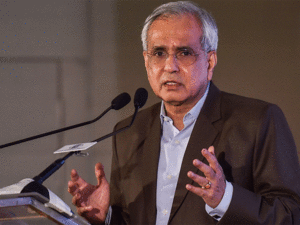 The finance minister in her budget mentioned the government’s intention of investing Rs 100 lakh crore in infrastructure in the next five years. That won’t be possible without huge private investment. How do you see the journey of PPP from now on?
The finance minister in her budget mentioned the government’s intention of investing Rs 100 lakh crore in infrastructure in the next five years. That won’t be possible without huge private investment. How do you see the journey of PPP from now on?
The journey of PPP has to be different now on. The previous PPP model of inviting private companies in the power sector, for example, has not succeeded. The key is, the government and private sector have to share risks more equitably. In the infrastructure sector, TOT (toll, operate and transfer) is a model for the future. Here the government would complete the project and then hand it over to the private party for maintaining the asset. Another successful PPP model is through hybrid annuity. Here both the public and private sectors are partners in developing a project.
Also, leasing existing airports to private parties, as has been experimented recently, will be yet another way of getting private investment. To begin with, private parties will operate and maintain six airports (Ahmedabad, Jaipur, Lucknow, Guwahati, Thiruvananthapuram and Mangaluru). More will follow.
Does this mean there will be a major shift from PPP in constructing new projects to PPP in existing government assets?
PPP in construction will also take place, but more emphasis will be laid on hybrid models. The government and the private sector can develop a project together.
After all, the government can’t leave all the risks and problems associated with a project to its private sector partner. What the government will do now is to extend a helping hand to the private partner so that the project turns successful.
Do you feel the banks will come forward and lend in the PPP projects? The public sector banks, for example, have of late been reluctant to lend to such projects.
Earlier, PPP projects were such that the private sector partner was asked to fend for itself. So many of those projects failed. But once the PPP projects are developed in a way where the government and the private company are equal partners, the banks will start lending, for sure. When a government asset, for example a road or an airport, already exists, and it is being handed over to a private sector, it will be a bankable project.
But the same NDA government had in 2014 emphasised a lot on EPC (engineering-procurement-construction) contracts, bringing down PPP projects. How is 2019 different from 2014?
In 2014, the private sector was not coming forward to invest. There was no adequate lending. So, the government needed to spend more from its exchequer to keep the GDP growth going. But things have changed a lot. Banks are being recapitalised and they have begun to lend now. So, naturally, the private sector is better placed today.
Finally, which are the new sectors where the government is expecting big private sector investment?
Two very big sectors — oilNSE -0.03 % and gas, and mining — are likely to attract huge private investment. A committee on liberalising oil and gas sector, which I had chaired, recommended measures for attracting private investment in both exploration and production.
The cabinet accepted it (in February) and the ministry of petroleum and natural gas has begun to implement that decision. We are expecting private companies, both domestic and foreign, to come forward in a bigger way.
I am now chairing a committee on the mining sector where there are potential for private sector investment. The idea is to liberalise mines, minerals and coal so as to ramp up production. We will ensure that mining becomes attractive to the private sector
[“source=economictimes.indiatimes”]


